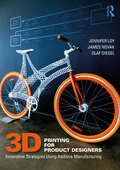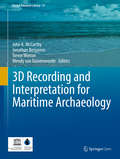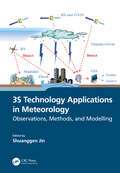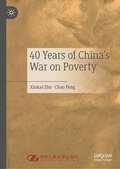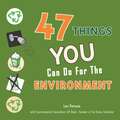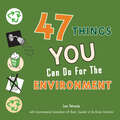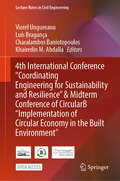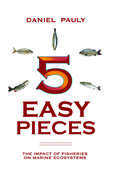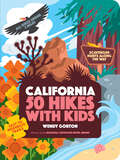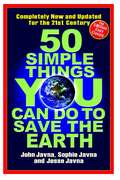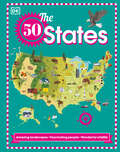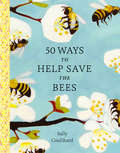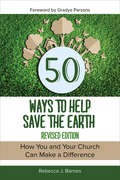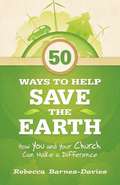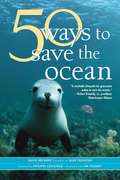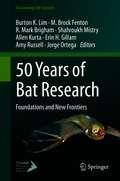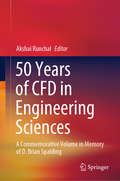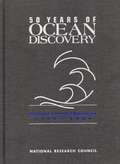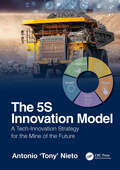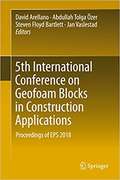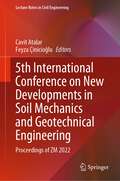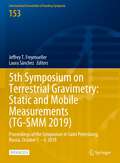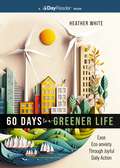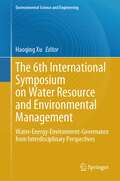- Table View
- List View
3D Printing for Product Designers: Innovative Strategies Using Additive Manufacturing
by Jennifer Loy James Novak Olaf Diegel3D Printing for Product Designers closes the gap between the rhetoric of 3D printing in manufacturing and the reality for product designers. It provides practical strategies to support the adoption and integration of 3D printing into professional practice. 3D printing has evolved over the last decade into a practical proposition for manufacturing, opening up innovative opportunities for product designers. From its foundations in rapid prototyping, additive manufacturing has developed into a range of technologies suitable for end-use products. This book shows you how to evaluate and sensitively understand people, process, and products and demonstrates how solutions for working with additive manufacturing can be developed in context. It includes a practical, step-by-step plan for product designers and CEOs aimed at supporting the successful implementation of 3D printing by stakeholders at all levels of a manufacturing facility, tailored to their stage of technology integration and business readiness. It features a wide range of real-world examples of practice illustrated in full colour, across industries such as healthcare, construction, and film, aligning with the strategic approach outlined in the book. The book can be followed chronologically to guide you to transform your process for a company, to meet the unique needs of a specific client, or to be used as a starting point for the product design entrepreneur. Written by experienced industry professionals and academics, this is a fundamental reference for product designers, industrial designers, design engineers, CEOs, consultants, and makers.
3D Recording and Interpretation for Maritime Archaeology (Coastal Research Library #31)
by Wendy Van Duivenvoorde Trevor Winton Jonathan Benjamin John K. McCarthyThis open access peer-reviewed volume was inspired by the UNESCO UNITWIN Network for Underwater Archaeology International Workshop held at Flinders University, Adelaide, Australia in November 2016. Content is based on, but not limited to, the work presented at the workshop which was dedicated to 3D recording and interpretation for maritime archaeology. The volume consists of contributions from leading international experts as well as up-and-coming early career researchers from around the globe. The content of the book includes recording and analysis of maritime archaeology through emerging technologies, including both practical and theoretical contributions. Topics include photogrammetric recording, laser scanning, marine geophysical 3D survey techniques, virtual reality, 3D modelling and reconstruction, data integration and Geographic Information Systems. The principal incentive for this publication is the ongoing rapid shift in the methodologies of maritime archaeology within recent years and a marked increase in the use of 3D and digital approaches. This convergence of digital technologies such as underwater photography and photogrammetry, 3D sonar, 3D virtual reality, and 3D printing has highlighted a pressing need for these new methodologies to be considered together, both in terms of defining the state-of-the-art and for consideration of future directions. As a scholarly publication, the audience for the book includes students and researchers, as well as professionals working in various aspects of archaeology, heritage management, education, museums, and public policy. It will be of special interest to those working in the field of coastal cultural resource management and underwater archaeology but will also be of broader interest to anyone interested in archaeology and to those in other disciplines who are now engaging with 3D recording and visualization.
3S Technology Applications in Meteorology: Observations, Methods, and Modelling
by Shuanggen JinSpatial information technology and its integration, such as remote sensing, geographic information systems (GIS), and global navigation satellite systems (GNSS), known as 3S technology, have been extensively utilized in managing and monitoring natural disasters. This book illustrates the 3S integrated applications in the field of meteorology and promotes the role of 3S in developing precise and intelligent meteorology. It presents the principles of 3S technology and the methods for monitoring different meteorological disasters and hazards as well as their application progress. The case studies from the United States, Japan, China, and Europe were conducted to help all countries understand the 3S technology functions in handling and monitoring severe meteorological hazards. FEATURES Presents integral observations from GNSS, GIS, and remote sensing in estimating and understanding meteorological changes Explains how to monitor and retrieve atmospheric parameter changes using GNSS and remote sensing Shows three-dimensional modelling and evaluations of meteorological variation processing based on GIS Helps meteorologists develop and use space-air-ground integrated observations for meteorological applications Illustrates the practices in monitoring meteorological hazards using space information techniques and case studies This book is intended for academics, researchers, and postgraduate students who specialize in geomatics, atmospheric science, and meteorology, as well as scientists who work in remote sensing and meteorology, and professionals who deal with meteorological hazards.
40 Years of China's War on Poverty
by Xinkai Zhu Chao PengChina's anti-poverty campaign has liberated hundreds of millions of citizens from absolute poverty, offering a compelling model for other developing countries around the world. This book demonstrates the path of China’s poverty alleviation and explores the approach and the theory underlying the country’s experience. The authors elucidate four important stages of poverty alleviation in China. They further investigate how the administration has balanced economic growth, regional development and the protection of ecosystem and cultural and heritage sites during China's remarkable transformation. As China’s development experience have extended the theory of international poverty alleviation, this book should provide valuable insights and offer enlightenment to global scholars, NGOs and governments of other developing countries.
47 Things Teens Can Do for the Environment
by Lexi Petronis Jill BuckSure, we all know the planet is in trouble. We hear talk all the time about climate change, air pollution from cars, oil spills into oceans, trash overflowing into waterways, and toxic chemicals leaking into our groundwater. Sigh. But the good news is there's a lot we can do to start cleaning up the Earth. And it starts with you! This book explores tons of small (and big) things that teens can do to make a positive difference in the environment such as: * go on a green date with a new crush * eat less meat * learn to shop vintage * create an environmental task force at school * go on an eco-adventure * and more!
47 Things You Can Do for the Environment
by Lexi Petronis Jill BuckSure, we all know the planet is in trouble. We hear talk all the time about climate change, air pollution from cars, oil spills into oceans, trash overflowing into waterways, and toxic chemicals leaking into our groundwater. Sigh. But the good news is there’s a lot we can do to start cleaning up the Earth. And it starts with you!
4th International Conference "Coordinating Engineering for Sustainability and Resilience" & Midterm Conference of CircularB “Implementation of Circular Economy in the Built Environment” (Lecture Notes in Civil Engineering #489)
by Viorel Ungureanu Luís Bragança Charalambos Baniotopoulos Khairedin M. AbdallaThis open access book gathers the proceedings of the 4th International Conference “Coordinating Engineering for Sustainability and Resilience” (CESARE) & Midterm Conference of CircularB “Implementation of Circular Economy in the Built Environment”, held in Timișoara, Romania, on May 29-31, 2024, as part of the COST Action CA21103. The volume represents the state of the art of sustainability and resilience in modern and future built environment, constructions, and infrastructure, and includes topics such as structural materials and robustness, fire engineering, risk assessment, impact of climate change on the built environment, sustainable resilience of systems in the built environment, smart cities, circular economy, design strategies for product design, integration of renewable energy at building and small urban area scales, restoration & rehabilitation of historical buildings, sustainable infrastructures, wind energy structures, façade engineering, green buildings, and waste management.
5 Easy Pieces: The Impact of Fisheries on Marine Ecosystems
by Daniel Pauly5Easy Pieces features five contributions, originally published in Nature and Science, demonstrating the massive impacts of modern industrial fisheries on marine ecosystems. Initially published over an eight-year period, from 1995 to 2003, these articles illustrate a transition in scientific thought--from the initially-contested realization that the crisis of fisheries and their underlying ocean ecosystems was, in fact, global to its broad acceptance by mainstream scientific and public opinion. Daniel Pauly, a well-known fisheries expert who was a co-author of all five articles, presents each original article here and surrounds it with a rich array of contemporary comments, many of which led Pauly and his colleagues to further study. In addition, Pauly documents how popular media reported on the articles and their findings. By doing so, he demonstrates how science evolves. In one chapter, for example, the popular media pick up a contribution and use Pauly's conclusions to contextualize current political disputes; in another, what might be seen as nitpicking by fellow scientists leads Pauly and his colleagues to strengthen their case that commercial fishing is endangering the global marine ecosystem. This structure also allows readers to see how scientists' interactions with the popular media can shape the reception of their own, sometimes controversial, scientific studies. In an epilog, Pauly reflects on the ways that scientific consensus emerges from discussions both within and outside the scientific community.
50 Hikes with Kids California: California (50 Hikes With Kids Ser.)
by Wendy GortonA Love of Nature Starts Here! California kids live in a magnificent natural playground, and 50 Hikes with Kids California helps them explore its beaches, deserts, mountains, and forests. Scavenger hunts for every hike make it fun for families to learn about the region’s geology, flora, and fauna. For successful adventures with even the youngest trekkers, award-winning author Wendy Gorton includes a detailed map, trustworthy and intuitive directions, a difficulty rating, restroom info, and places to grab a snack nearby for every trip.
50 Simple Things You Can Do to Pave the Earth
by Darryl Henriques50 things you can do to eliminate your carbon footprint.
50 Simple Things You Can Do to Save the Earth: Completely New and Updated for the 21st Century
by John JavnaTogether, We Can Make a DifferenceToday's environmental problems may seem too overwhelming for one person to tackle . . . but you don't have to do it alone. Now you have partners--50 of them.50 Simple Things You Can Do to Save the Earth, the revolutionary 1990 bestseller, is back in a completely revised, updated edition . . . and it's just as innovative and groundbreaking as the original. The authors have teamed up with 50 of America's top environmental groups, including The Natural Resources Defense Council, the National Wildlife Federation, and Rainforest Action Network. Each group has chosen one issue and provided a simple, step-by-step program that will empower you and your family to become citizen activists in the fight to save the Earth.It's easy to get started. Just pick one! Fight global warming "one city at a time" with the Sierra Club's Cool Cities Campaign Roll up your sleeves and save an endangered species with the Wilderness Society Protect coral reefs and create a marine reserve with Seacology Get your congregation excited about protecting God's creations with Interfaith Power and Light Invite songbirds into your neighborhood with the National Audubon SocietyAll it takes is a little effort. When we work together, we can work miracles! Get started now!
The 50 States: Amazing landscapes. Fascinating people. Wonderful wildlife
by DKTake a tour through America and discover the 50 States that make up the USA!From north to south and coast to coast, America's 50 states await! Learn all about the natural wonders, man-made landmarks and incredible history that make each state unique with this fun-filled state-by-state guide. No plane ticket is needed! Inside the pages of this children&’s geography book, you&’ll discover: • Simple text that provides fun facts about America's 50 states. • Fun and dynamic layout and imagery that make learning enjoyable. • Colorful illustrations that are paired with amazing photography. • Engaging, age-appropriate text. • Cross-curriculum appeal: covers a range of topics, including geography, history and social studies. Welcome to the wild and wonderful United States of America! From Alabama and Arizona to Wyoming and Wisconsin, this travel activity book for kids is an engaging and educational guided tour of America. Did you know Californian surfers invented skateboarding, so they had something to do when there were no waves? And that Holiday World in Santa Claus, Ind., was the world's first theme park? Packed to the brim with fascinating facts and cool pictures, kids will be entertained and inspired by the beauty and diversity of &“the land of the free.&” The 50 States is the perfect educational book for kids ages 7-9 who want to learn more about the USA.
50 Ways to Help Save the Bees
by Sally CoulthardHave you heard the buzz? Bees—the tiny insects that pollinate nearly all our fruits and vegetables—need our support. If you like to eat your fruits and vegetables (and even if you don’t!), you should value our planet’s bees. Yet, because of environmental pollution, loss of green spaces, and a general disregard for the well-being of insects, humans have caused the number of bees to plummet. In the past year, the managed honeybee population of the United States has dropped 40 percent, and there has been a 25 percent decline in wild bees—figures that are alarming at best. Helping the bees is easier than you might imagine, however, as outlined in this charmingly illustrated call to action. Here are 50 easy suggestions, along with an informative introduction, to get you started. Try cutting your lawn less frequently, buying ethical honey, and keeping your yard dark at night. You can follow easy instructions for building a bee-friendly window box or a green-roofed garden shed. Little things can make a big difference. Just ask a bee.
50 Ways to Help Save the Earth: How You And Your Church Can Make A Difference
by Rebecca J. BarnesThis guide outlines fifty ways in which you, your congregation, and your local community can help fight global warming and enjoy participation in a vital part of Christian discipleship. 50 Ways to Help Save the Earth makes a clear connection, in a practical and unintimidating way, between stewardship of the earth and living one's faith. <p><p> This easy-to-follow book consists of seven chapters on topics related to global climate change: "Water," "Energy," "Transportation," "Food and Agriculture," "People," "Other Species," and "Wilderness and Land." Each chapter begins with a statement on how the content relates to global warming, followed by seven action items ranging from individual efforts to activities that encourage the involvement of the congregational and wider communities.
50 Ways to Help Save the Earth: How You and Your Church Can Make a Difference
by Rebecca J. Barnes-DaviesThis guide outlines fifty ways in which you, your congregation, and your local community can help fight global warming and enjoy participation in a vital part of Christian discipleship. 50 Ways to Help Save the Earth makes a clear connection, in a practical and unintimidating way, between stewardship of the earth and living one's faith. This easy-to-follow book consists of seven chapters on topics related to global climate change: "Water," "Energy," "Transportation," "Food and Agriculture," "People," "Other Species," and "Wilderness and Land." Each chapter begins with a statement on how the content relates to global warming, followed by seven action items ranging from individual efforts to activities that encourage the involvement of the congregational and wider communities.
50 Ways to Save the Ocean
by David HelvargThe book focuses on practical, easily-implemented actions everyone can take to protect and conserve the vital resource of Ocean. The book addresses daily choices that affect the ocean's health: what fish should and should not be eaten; how and where to vacation; storm drains and driveway run-off; protecting local water tables; proper diving, surfing, and tidepool etiquette; and supporting local marine education.
50 Years of Bat Research: Foundations and New Frontiers (Fascinating Life Sciences)
by Burton K. Lim M. Brock Fenton R. Mark Brigham Shahroukh Mistry Allen Kurta Erin H. Gillam Amy Russell Jorge OrtegaWith more than 1,400 species, bats are an incredibly diverse and successful group of mammals that can serve as model systems for many unique evolutionary adaptations. Flight has allowed them to master the sky, while echolocation enables them to navigate in the dark. Being small, secretive, nocturnal creatures has made bats a challenge to study, but over the past 50 years, innovative research has made it possible to dispel some of the mystery and myth surrounding them to give us a better understanding of the role these animals play in the ecosystem. The structure of the book is based on several broad themes across the biological sciences, including the evolution of bats, their ecology and behavior, and conservation of biodiversity. Within these themes are more specific topics on important aspects of bat research, such as morphology, molecular biology, echolocation, taxonomy, systematics, threats to bats, social structure, reproduction, movements, and feeding strategies. Given its scope, the book will appeal to the wider scientific community, environmental organizations, and government policymakers who are interested in the interdisciplinary aspects of biology and nature.
50 Years of CFD in Engineering Sciences: A Commemorative Volume in Memory of D. Brian Spalding
by Akshai RunchalProf. D. Brian Spalding, working with a small group of students and colleagues at Imperial College, London in the mid-to late-1960’s, single-handedly pioneered the use of Computational Fluid Dynamics (CFD) for engineering practice.This book brings together advances in computational fluid dynamics in a collection of chapters authored by leading researchers, many of them students or associates of Prof. Spalding. The book intends to capture the key developments in specific fields of activity that have been transformed by application of CFD in the last 50 years. The focus is on review of the impact of CFD on these selected fields and of the novel applications that CFD has made possible. Some of the chapters trace the history of developments in a specific field and the role played by Spalding and his contributions. The volume also includes a biographical summary of Brian Spalding as a person and as a scientist, as well as tributes to Brian Spalding by those whose life was impacted by his innovations. This volume would be of special interest to researchers, practicing engineers, and graduate students in various fields, including aerospace, energy, power and propulsion, transportation, combustion, management of the environment, health and pharmaceutical sciences.
50 Years of Ocean Discovery: National Science Foundation 1950--2000
by National Research Council Staff Ocean Studies Board StaffThis book describes the development of ocean sciences over the past 50 years, highlighting the contributions of the National Science Foundation (NSF) to the field's progress. Many of the individuals who participated in the exciting discoveries in biological oceanography, chemical oceanography, physical oceanography, and marine geology and geophysics describe in the book how the discoveries were made possible by combinations of insightful individuals, new technology, and in some cases, serendipity.In addition to describing the advance of ocean science, the book examines the institutional structures and technology that made the advances possible and presents visions of the field's future. This book is the first-ever documentation of the history of NSF’s Division of Ocean Sciences, how the structure of the division evolved to its present form, and the individuals who have been responsible for ocean sciences at NSF as “rotators” and career staff over the past 50 years.
The 5S Innovation Model: A Tech-Innovation Strategy for the Mine of the Future
by Antonio 'Tony' NietoThis book is aimed to help us look into the future of mining by defining ultimate operational conditions that will be present in a typical mining operation regardless of how far in the future. It introduces an innovation strategy designed to identify current and future technologies to achieve specific ultimate operational conditions that will be present in ‘the mine of the future’. The mining innovation strategy presented here is the result of several innovation projects where the author had the opportunity to assist and had successfully implemented it at several mining companies and mining research institutions around the world, including Australia, South Africa, the United States, Canada, Peru, and Mexico. This innovation strategy is designed to be consistent with any type of mining method as well as any commodity being mined, such as metal or nonmetal mining, soft-rock or hard-rock mining, underground or surface mining. The five ultimate mining operational conditions or drivers discussed in this book were carefully defined considering current operational and technology trends, which will keep any mining company competitive during the following decades. The mining innovation strategy thus considers five ultimate operational conditions or drivers (1) Achieving maximum safety, (2) simplifying systems, (3) using smart-intelligent systems, (4) designing stealth operations,and (5) sustainable use of environmental and human resources within the operation. These five innovation drivers are common denominators to any mining method, regardless of their operational nature or commodity being mined either today or in the future. It is thus envisaged that the mining innovation model introduced in this book can serve as an initial guideline for the mining industry to better identify current and future technologies that need to be addressed today.
5th International Conference on Geofoam Blocks in Construction Applications: Proceedings Of EPS 2018
by David Arellano Abdullah Tolga Özer Steven Floyd Bartlett Jan VaslestadFirst summary of latest results on geofoam studies and their applications.<P><P> Includes most recent applications of the technology.<P> Contains contributions of the pioneers of geofoam development, Tor Erik Frydenlund and Geir Refsdal.<P>These proceedings of the EPS 2018: 5th International Conference on Geofoam Blocks in Construction Applications, held in Kyrenia, Northern Cyprus on May 9 to 11, 2018, present a collection of contributions on the state-of-the-art of research and applications relating to geofoam. Geofoam researchers, consultants, molders, contractors and practitioners from all around the globe discuss the recent developments and future trends of expanded polystyrene (EPS)-block geofoam technology and its construction applications. EPS’18 contributes to the development of geofoam applications, following on from successful conferences in Oslo (1985), Tokyo (1996), Salt Lake City (2001) and Oslo (2011). The book discusses topics including, but not limited to, current use of geofoam, design specifications, applications, new concepts, material properties, modeling and specific topics in geofoam blocks in construction applications.
5th International Conference on New Developments in Soil Mechanics and Geotechnical Engineering: Proceedings of ZM 2022 (Lecture Notes in Civil Engineering #305)
by Cavit Atalar Feyza ÇinicioğluThis volume highlights the latest advances and innovations in the field of soil mechanics and geotechnical engineering, as presented by leading international researchers and engineers at the 5th International Conference on New Developments in Soil Mechanics and Geotechnical Engineering (ZM), held in Nicosia, Northern Cyprus on June 30-July 2, 2022. It covers a diverse range of topics such as soil properties and characterization; shallow and deep foundations; soil improvement; excavations, support systems, earth-retaining structures and underground systems; earthquake geotechnical engineering; stability of slopes and landslides; fills and embankments; environmental preservation, water and energy; modelling and analyses in geotechnical engineering. The contributions, which were selected by means of a rigorous international peer-review process, present a wealth of exciting ideas that will open novel research directions and foster multidisciplinary collaboration among different specialists.
5th Symposium on Terrestrial Gravimetry: Proceedings of the Symposium in Saint Petersburg, Russia, October 1 – 4, 2019 (International Association of Geodesy Symposia #153)
by Jeffrey T. Freymueller Laura SánchezThis open access volume contains the proceedings of the 5th Symposium on Terrestrial Gravimetry: Static and Mobile Measurements (TG-SMM2019) held in St. Petersburg, Russia, October 1 – 4, 2019. The symposium was hosted by the State Research Center of the Russian Federation Concern CSRI Elektropribor, JSC and was attended by 75 participants from 15 different countries. 32 oral and 20 poster contributions were presented in four different topical sessions: Terrestrial, shipboard and airborne gravimetry, Absolute gravimetry, Relative gravimetry, gravity networks and applications of gravimetry and Cold atom and superconducting gravimeters, gravitational experiments.
60 Days to a Greener Life: Ease Eco-anxiety Through Joyful Daily Action
by Heather WhiteAre you worried about the climate crisis? Are you suffering from eco-anxiety? Do you want to help but you're not sure how? Do you want to learn how to make greener choices? If you answered yes to any of those questions, author and environmentalist Heather White's 60 Days to a Greener Life is the resource you need. You can read an entry every day or at your own pace. Each entry provides valuable insights and easy-to-apply ways you can live a more eco-friendly, joyful life. Each entry includes:a topic or question related to our world.an easy-to-understand explanation of ways you can adjust your lifestyle.an energizing prompt that gives you simple ideas on how to apply what you've learned.60 Days to a Greener Life will teach you about:eco-anxiety, how to manage it, and why individual action matters.climate change, recycling, and greener, sustainable school lunch choices. connecting to nature and wildlife.volunteering and how to jumpstart conversations about good environmental practices.renewable energy, regenerative agriculture, organic food, and GMOs.toxic chemicals, plastic pollution, safe drinking water, and more.Heather White is the founder of OneGreenThing.org. She directed environmental education advocacy at the nation's largest conservation organization, served as executive director to an environmental heath watchdog in Washington, DC, and led the nonprofit partner to Yellowstone National Park. She's been featured on Good Morning America, CBS, PBS, ABC, and quoted in the New York Times, the Washington Post, and Teen Vogue.
The 6th International Symposium on Water Resource and Environmental Management: Water-Energy-Environment-Governance from Interdisciplinary Perspectives (Environmental Science and Engineering)
by Haoqing XuThis book is designed to be the introductory work in the Water-Energy-Environment-Governance from Interdisciplinary Perspectives Series and provides an in-depth look at sustainable development and management in the water sector across. The water-energy-environment nexus (WEEN) represents important interstate connections of water, energy, and the environment. Present day water and energy systems are interdependent. Water is used in all phases of energy production and electricity generation. Energy is required to extract, convey, and deliver water of appropriate quality for diverse human uses and then again to treat waste waters prior to their return to the environment. Security in water, energy, and the environment is associated with human, economic, and environmental sustainability. This interweaving is strengthening under aggregating natural resource scarcity and climate change. This book includes selected papers from the 6th International Symposium on Water Resource and EnvironmentalManagement (WREM 2023) and consists of themes pertaining to water resource and environmental management. It provides readers with comprehensive information, and formulation of solutions leading to a set of Water-Energy-Environment-Governance from Interdisciplinary Perspectives through our forum and the publication of your research. As a reference, it is of interest to students, scientists, engineers, government officials, and water resource managers.
